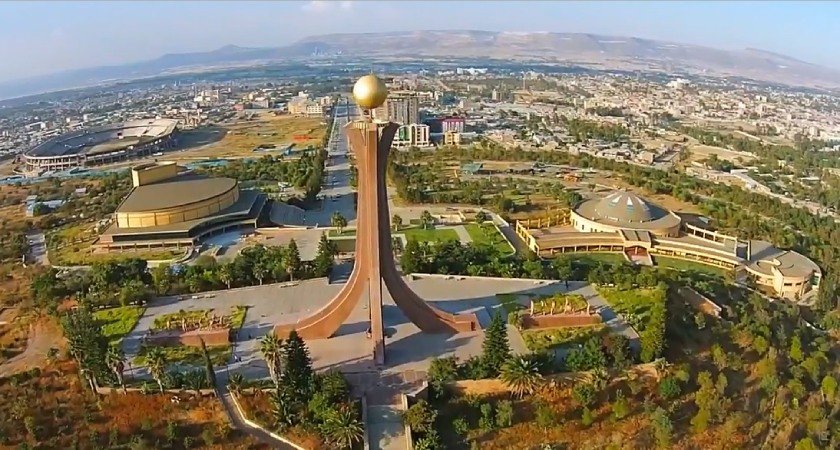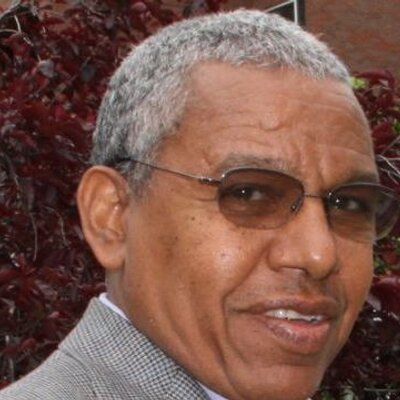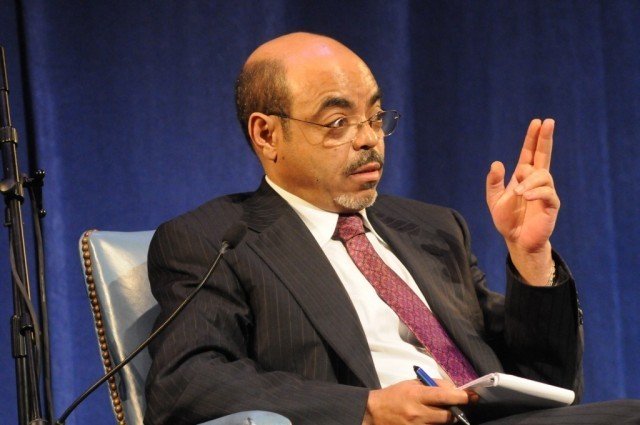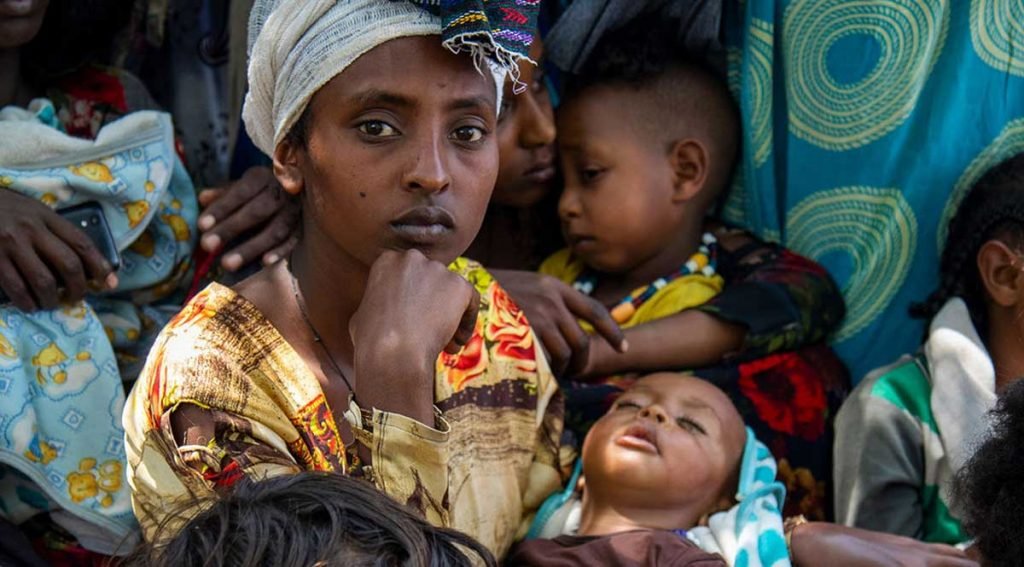Understanding the Tigray Region: Facts & Insights
If you’ve been following global news, you might have heard of the ongoing conflict in the Tigray region of Ethiopia. But what exactly is Tigray, and why is it in the news? In this article, we’ll take a closer look at the region’s culture, history, and the ongoing conflict that has devastated the lives of its people.

Tigray is one of the ten regional states of Ethiopia, located in the northern part of the country. It is home to the Tigray people, an ethnic group that has played a significant role in Ethiopian politics and society for several decades. Despite its historical and cultural significance, Tigray is currently facing a humanitarian crisis as a result of the ongoing conflict that began in November 2020.
Key Takeaways:
- Tigray is a region in northern Ethiopia, home to the Tigray people.
- The ongoing conflict in Tigray has led to a humanitarian crisis and has affected the lives of many Tigray people.
- Understanding the culture and history of Tigray is crucial in comprehending the impact of the conflict in the region.
- International support is essential in addressing the urgent humanitarian needs and paving the way for lasting peace and stability in Tigray.
Introduction to the Tigray Region

The Tigray region is located in the northern part of Ethiopia and is one of the country’s nine administrative regions. Its cultural significance extends far beyond its borders, with a rich history dating back centuries. The Tigray people are known for their unique traditions and customs, which have played a significant role in shaping Ethiopia’s cultural identity.
The Tigray region is characterized by a diverse landscape that includes mountain ranges, valleys, and deserts. Historically, it was an important trade center, connecting Ethiopia with other parts of Africa. It played a crucial role in the formation of the ancient Axumite Kingdom, a powerful civilization that flourished between the 1st and 7th centuries AD.
Today, the Tigray region continues to be an essential part of Ethiopia’s cultural heritage, with its historic landmarks, rock-hewn churches, and vibrant cultural traditions drawing visitors from around the world. By exploring the Tigray region’s culture and history, you can gain a deeper understanding of Ethiopia’s rich and diverse identity.
The Geographical Location of Tigray Region
| Tigray Region | Location |
| Capital | Mekelle |
| Population | At least 7 million |
| Area | 50,078 km2 |
| Official Language | Tigrinya |
| Other Languages Spoken | Amharic and English |
| Climate | Varies from arid to semi-arid |
As shown in the table above, the Tigray region covers an area of over 50,000 square kilometers and has a diverse population of at least seven million people. The official language is Tigrinya, although Amharic, Oromo, and English are also commonly spoken. The climate varies from arid to semi-arid, with temperatures ranging from cool to hot.
The region shares borders with Eritrea to the north, Sudan to the west, the Afar region to the east, and the Amhara region to the south. Its strategic location has made it an important gateway for trade, as it connects Ethiopia to the Red Sea, the Gulf of Aden, and other parts of Africa.
Now that you have an introduction to the Tigray region’s geographical location, you can explore its rich culture and history in more detail.
Exploring Tigray’s Vibrant Culture
When it comes to culture, there’s no shortage of diversity and traditions in Tigray. The Tigray people have a strong attachment to their heritage and have preserved it for centuries. Music, dance, and art are an integral part of Tigray’s lifestyle.
Tigray’s Art and Architecture
If you’re interested in art forms, Tigray has a unique style of its own. Visitors can admire the rock-hewn churches, which are incredible feats of engineering and artistic creation. The incredible detail and precision of the carvings are a testament to the ingenuity of the Tigray people.
Cuisine and Festivals in Tigray
No visit to Tigray is complete without trying the local cuisine. The region’s fertile soils produce some of the best coffee, honey, and injera (a sourdough bread) in the world. Festivals, such as Timket and Meskel, celebrate the region’s religious history and are fantastic for immersing yourself in local traditions.
In summary, Tigray’s culture is rich and varied, with impressive architecture, delicious cuisine, and colorful festivals. Exploring the different facets of Tigray’s culture is a must for all first-time visitors and an exciting adventure for those who have visited before.
Understanding the Ongoing Conflict in Tigray
The Tigray conflict is a complex and evolving crisis that has ravaged the Tigray region in northern Ethiopia since November 2020. The conflict is rooted in long-standing political tensions between the Tigray People’s Liberation Front (TPLF) and the Ethiopian federal government led by Prime Minister Abiy Ahmed.

On November 4, 2020, tensions boiled over when the Ethiopian government launched a military offensive against the TPLF in response to an alleged attack on a federal army base. The conflict quickly escalated into a full-scale war, with both sides engaging in intense fighting that has led to numerous casualties and vast displacement of civilians.
| Key Players | Causes | Impact |
|---|---|---|
| Ethiopian Federal Government | Political tensions with TPLF | Humanitarian crisis, displacement, and loss of life |
| TPLF | Perceived marginalization by federal government | Humanitarian crisis, displacement, and loss of life |
| Eritrean Government | Regional conflict dynamics | Allegations of human rights abuses and war crimes |
The conflict has had a devastating impact on the civilian population, with reports of widespread human rights abuses, including sexual violence, extrajudicial killings, and forced displacement. An estimated 2.2 million people have been displaced, and over 60,000 have fled to neighboring Sudan in search of safety and shelter.
The humanitarian crisis in Tigray remains dire, with reports of widespread food insecurity, lack of access to clean water and medical care, and limited humanitarian aid due to ongoing fighting and bureaucratic obstacles.
Efforts to negotiate a peaceful resolution to the conflict have so far been unsuccessful, with both sides continuing to engage in fighting and violence. The international community has called for an immediate end to the conflict and for all parties to engage in dialogue to find a peaceful and sustainable solution to the crisis.
Impact on the Lives of the Tigray People
The Tigray conflict has created a grave humanitarian crisis that has deeply impacted the lives and well-being of the Tigray people. Since the conflict started in November 2020, over two million people have been displaced, and the majority are women and children. These people have been forced to flee their homes, often with no possessions, and have sought refuge in camps or with host communities.
The conflict has also created food insecurity, with more than 5 million people in need of emergency food assistance. Access to healthcare and medical facilities has been severely limited due to the destruction of medical infrastructure and a shortage of medical personnel.
Human rights violations, including sexual violence, torture, and extrajudicial killings, have also been reported, with women and girls being disproportionately affected. The conflict has also hindered access to education, with over 1.4 million children unable to attend school.
| Impact of the conflict on the Tigray people: |
|---|
| Over two million people displaced, mostly women and children |
| More than 5 million people in need of emergency food assistance |
| Severe limitations on access to healthcare and medical facilities |
| Reports of human rights violations, including sexual violence and extrajudicial killings |
| Over 1.4 million children unable to attend school |
The Tigray conflict has had a devastating and long-lasting impact on the Tigray people, many of whom continue to suffer the effects of the conflict to this day.
International Response to the Tigray Crisis
The ongoing Tigray conflict has prompted a global response, with many countries and organizations offering diplomatic and aid support to those affected by the crisis. The United Nations has urged all parties involved to prioritize the safety and protection of civilians and uphold human rights. Several international bodies have expressed concern over reports of human rights abuses, including gender-based violence and killings.
Donors, including the United States and European Union, have pledged millions in humanitarian aid to support those affected by the conflict. Aid agencies are working to provide food, water, shelter, and medical assistance to those in need, although access remains a challenge due to ongoing fighting and restrictions imposed by authorities. Furthermore, the International Criminal Court (ICC) has launched an investigation into reports of war crimes and crimes against humanity committed in the Tigray region.
| International Response Efforts | Description |
|---|---|
| United States | Committed $305 million to provide humanitarian assistance to the Tigray region and pledged to work with international partners to investigate human rights abuses. |
| European Union | Committed €92 million in aid to support affected communities. Will work towards finding a sustainable solution to the conflict. |
| African Union | Has called for an immediate ceasefire and the protection of civilians. Offers to support political dialogue toward resolving the crisis. |
| United Kingdom | Offered £27 million in humanitarian aid to those affected by the conflict and is working on a political solution with international partners. |
| International Criminal Court (ICC) | Opened an investigation into reports of crimes committed in the Tigray region, including war crimes and crimes against humanity. |
International support continues to play an essential role in addressing the Tigray crisis. Governments, humanitarian organizations, and the international community must continue their efforts towards finding a sustainable solution and helping those affected by the conflict to rebuild their lives.
Addressing Humanitarian Needs in Tigray
The ongoing Tigray conflict has caused significant humanitarian needs in the region. With many Tigrayans displaced from their homes, access to essential food and medical supplies has become increasingly difficult. The crisis has left many in dire need of urgent assistance.
The United Nations and other international organizations have been working tirelessly to provide aid and assistance to those in need. However, the security situation on the ground has made it challenging to reach affected populations and provide necessary aid effectively.
In addition, reports of human rights violations, including rape and sexual violence against women and girls, have further complicated the situation. Addressing these atrocities and ensuring justice for the victims is a critical step in achieving long-term peace and stability in the region.
| Humanitarian Needs in Tigray | Challenges Faced |
|---|---|
| Food assistance for displaced populations | Difficulty accessing all affected areas |
| Medical supplies and healthcare services | Security risks and violence targeting aid workers |
| Protection for vulnerable populations, including women, children, and the elderly | Limited resources and funding for aid efforts |
As efforts continue to address the needs of the Tigray people, it is crucial to ensure that aid is delivered equitably and efficiently across all affected areas. The international community must also work towards resolving the conflict and establishing a lasting peace that prioritizes the well-being and safety of the Tigray people.
Seeking Peace and Reconciliation in Tigray
After months of conflict and violence, efforts are underway to bring peace and stability to the Tigray region. The ongoing Tigray crisis has resulted in countless civilian deaths, displacement, and humanitarian suffering. To achieve lasting peace, there are a range of initiatives aimed at promoting dialogue, reconciliation, and transitional justice.
One of the primary strategies is peace talks between the Ethiopian government and the Tigray People’s Liberation Front (TPLF). Several rounds of talks have already taken place, facilitated by various African Union envoys, with the aim of finding a peaceful resolution to the conflict.
In addition to peace talks, there are also efforts to address underlying political, economic, and social issues that contribute to instability in the region. This includes addressing grievances, providing support and resources to affected communities, and building trust between warring factions.
Another critical component of achieving peace is transitional justice. This involves holding those responsible for human rights abuses and atrocities accountable, as well as providing reparations to victims and their families. Transitional justice is essential for creating a sense of justice and closure, restoring trust in institutions, and preventing future conflicts.
| Efforts Underway for Peace and Stability in Tigray | Description |
|---|---|
| Peace talks between Ethiopian government and TPLF | Facilitated by African Union envoys to find a peaceful resolution to the conflict |
| Addressing political, economic, and social issues that contribute to instability | Includes addressing grievances, providing support and resources to affected communities, and building trust between warring factions |
| Transitional justice | Holding those responsible for human rights abuses and atrocities accountable, and providing reparations to victims and their families |
While these efforts are promising, achieving lasting peace and stability in Tigray will require sustained commitment and support from the international community. There is an urgent need for humanitarian aid, resources, and funding to address the immediate needs of affected populations and support long-term recovery efforts.
It is essential to continue monitoring the situation in Tigray and support initiatives aimed at promoting peace, reconciliation, and justice. Only through sustained efforts and international support can the Tigray people rebuild their lives and secure a prosperous future.
Remembering the Tigray Genocide
The ongoing conflict in Tigray has been marred by reports and allegations of genocide, with horrific crimes committed against the Tigrayan people. The international community has been called upon to take action and ensure justice is served.
The gravity of the situation has prompted investigations into the events, and while the full extent of the atrocities is yet to be uncovered, the evidence is damning. It is crucial that the perpetrators of these heinous acts are held accountable and that steps are taken to prevent such atrocities from happening again.
“I have witnessed a humanitarian catastrophe unfolding right before my eyes. The stories we have heard and the pictures we have seen are truly shocking. All parties involved in the conflict must respect international humanitarian law and protect civilians, including refugees and internally displaced people.” – Filippo Grandi, UN High Commissioner for Refugees.
The international community has a responsibility to address this crisis and provide support to those affected. The Tigray genocide should serve as a stark reminder of the horrors that can occur in times of conflict and the importance of taking swift and decisive action.
Building a Resilient Future for Tigray
Despite the challenges and hardships brought on by the Tigray conflict and crisis, organizations and individuals are working tirelessly to rebuild and empower the region and support affected communities on their path towards recovery.
One such initiative is the Tigray Development Association (TDA), a non-profit organization dedicated to promoting sustainable development and improving the quality of life for Tigray’s people. The TDA has implemented various programs, including the construction of schools and health clinics, the provision of clean water, and the promotion of women’s rights and gender equality, to name a few.
Other organizations and individuals have sought to address the humanitarian crisis in Tigray by providing food aid, medical assistance, and shelter to those in need. The United Nations and international aid agencies have also played a critical role in delivering aid and advocating for peace and stability in the region.
In addition to these efforts, there has been a growing call for inclusive political dialogue and transitional justice processes that can help address the underlying causes of the conflict and promote lasting peace and reconciliation in the region.
While there is still much work to be done, these initiatives offer hope for a brighter future for Tigray and its people.
Conclusion
Congratulations! You have gained a comprehensive understanding of the Tigray region, its culture, history, and the ongoing conflict that has impacted its people.
It is essential to remember that the Tigray conflict is an ongoing crisis that continues to affect the lives and well-being of the Tigray people. International support and aid are crucial in securing a peaceful and prosperous future for Tigray and its people.
We must continue to acknowledge the significance of Tigray’s culture and history, while also addressing the urgent humanitarian needs of the affected populations. By promoting peace, reconciliation, and lasting stability in Tigray, we can build a resilient future for the region and support the affected communities in their path towards recovery.
Thank you for taking the time to learn about the Tigray region. Your support and advocacy can make a significant difference in the lives of the Tigray people.
FAQ
What is the Tigray region?
The Tigray region, also known as Tigray, is a region in northern Ethiopia. It is one of the nine regional states of the country and is located in the highlands of the Ethiopian Plateau.
What is the history of the Tigray region?
The Tigray region has a rich and ancient history. It was the birthplace of the Kingdom of Aksum, one of the oldest civilizations in Africa, which flourished from the first century AD to the 8th century AD. The region has also played a significant role in Ethiopia’s history, including the resistance against Italian colonization in the 19th and 20th centuries.
What is the ongoing conflict in the Tigray region about?
The ongoing conflict in the Tigray region began in November 2020 when tensions escalated between the regional government of Tigray and the Ethiopian federal government. The conflict involves political, ethnic, and territorial disputes, with both sides engaging in military operations and clashes.
How has the conflict in Tigray impacted its people?
The conflict in Tigray has had devastating consequences for its people. It has resulted in widespread displacement, loss of lives, and reports of human rights violations. Many Tigrayan civilians have been affected by the disruption of basic services, such as healthcare, education, and access to food and clean water.
What is the international response to the Tigray crisis?
The international community has expressed concern about the situation in Tigray and called for an end to the violence and human rights abuses. Some countries and organizations have provided humanitarian aid to alleviate the suffering of the affected population. There have also been diplomatic efforts to facilitate peace talks and find a resolution to the conflict.
What are the urgent humanitarian needs in Tigray?
The humanitarian needs in Tigray are immense. Many people require urgent access to food, clean water, healthcare, and shelter. Humanitarian organizations are working to provide assistance, but the challenges include security risks, limited access to affected areas, and the scale of the crisis.
What is being done to achieve peace and reconciliation in Tigray?
Efforts are underway to achieve peace and reconciliation in Tigray. This includes peace talks between the conflicting parties, the establishment of a ceasefire, and discussions on political solutions. Transitional justice processes, such as accountability for human rights violations and promoting social cohesion, are also being considered to promote healing and long-term stability.
What can be done to support the affected communities in Tigray?
Supporting the affected communities in Tigray requires a combination of immediate humanitarian aid and long-term development initiatives. This includes providing food and medical assistance, rebuilding infrastructure, promoting economic opportunities, and addressing the psychological and social impacts of the conflict.
What is being done to address the reports of genocide in Tigray?
Reports and allegations of genocide in Tigray have raised significant international concern. Calls for independent investigations and accountability for those responsible have been made. The international community is actively engaged in assessing the evidence, supporting investigations, and seeking justice for the victims.
How can the Tigray region rebuild and move forward?
Rebuilding and empowering the Tigray region requires international support and collaboration. This includes financial resources for reconstruction efforts, sustainable development initiatives, creating opportunities for education and employment, and fostering dialogue and reconciliation among different communities.
What can individuals do to help the Tigray region?
Individuals can support the Tigray region by raising awareness about the ongoing conflict and its impact, donating to reputable humanitarian organizations working in the area, and advocating for international attention and action to ensure the rights and well-being of the Tigray people.





Responses